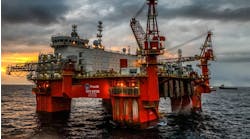Mark your calendars for November 15, 2011. On that day, the government expects every operator in the Gulf of Mexico to have a safety system in place and every contractor working offshore will be expected to meet the requirements of the facility where they work. Operators who do not have a safety system on time will face fines or operational restrictions. Contractors who have not met their responsibilities may not be able to work at all.
The requirement is called a Safety and Environmental Management System (SEMS). It is one of the new rules from the Bureau of Ocean Energy Management, Regulation and Enforcement (BOEMRE) in the aftermath of the Macondo blowout last April. In one sense it is nothing new. Operators have taken systemic approaches to offshore safety for many years. API produced its guidelines on safety management systems back in 1993. However, the new BOEMRE regulations remove much of the flexibility from the program, and add a layer of recordkeeping and detail that has offshore operators scrambling.
The regulations require operators to include 13 measures in their SEMS:
- General provisions
- Safety and environmental information
- Hazards analysis
- Management of change
- Operating procedures
- Safe work practices
- Training
- Mechanical integrity
- Pre-startup review
- Emergency response and control
- Investigation of incidents
- Audits
- Records and documentation.
Every SEMS program must by audited within the first two years of implementation and then every three years after that. BOEMRE may request to see an operator’s SEMS plan at any time and will review the results of the audits. Every black mark on an audit could potentially become a violation. So the stakes are very high.
PEC Premier works directly with contractors on training curriculum, safety and training record databases, and standardized audits. The primary concern is how to help the contractors prepare for the November 15 deadline. We find ourselves on the front lines of a massive effort.
Under SEMS, operators will perform a hazard analysis to determine any threats to safety or the environment on their lease sites. This includes Job Safety Analysis (JSA) for every activity that is a described in the SEMS plan. Every contractor must be evaluated under SEMS. Contractors must have written safe work practices that address any hazards on the facility. The operators and contractors must agree that their safety plans meet the SEMS requirements. Contractors must also be able to show that their workers have been trained in the skills and knowledge they need for safety, environmental compliance and their specific job duties.
As operators develop their SEMS, contractors may have new responsibilities to meet. Will contractors need to document mechanical integrity on equipment they bring and use at a facility? Will they need to help document investigation and corrective measures following an incident? The list of responsibilities depends on how the operators’ SEMS is written.
Most industries take several years to implement safety management systems. The offshore world only has until November to be ready. Our experience shows us that the only way to meet the deadline is through standardization. Working with operators and contractors, PEC developed its first basic orientation course for offshore workers around the time API’s safety management approach was introduced nearly 20 years ago. At the time, operators and contractors each had different orientation programs. Once they got together, they discovered that almost all of their courses contained similar elements. Working together, we were able to standardize the approaches into a common curriculum. Five years ago, the SafeGulf group used that approach to spread standardized orientation across the Gulf and create a card system so that workers could change jobs without having to repeat their orientation. The jury is still out on how much additional training BOEMRE will expect beyond orientation, but the approach still works.
The industry faces an enormous hurdle that may be as significant as the new permitting requirements. The safety culture is firmly rooted in the oil and gas sector, but people who have been involved with safety management systems will say the documentation, recordkeeping and audit requirements are harder to meet than the hands-on safety measures. There is a lot to be done and companies throughout the oil patch are scrambling to meet the new requirement. How high are the stakes? For operators and contractors alike, the ability to meet the November 15 deadline may determine whether they can work on November 16.
Ken Wells
SEMS Project Manager
PEC Premier
This page reflects viewpoints on the political, economic, cultural, technological, and environmental issues that shape the future of the petroleum industry. Offshore Magazine invites you to share your thoughts. Email your Beyond the Horizon manuscript to David Paganie at[email protected].
Offshore Articles Archives
View Oil and Gas Articles on PennEnergy.com


